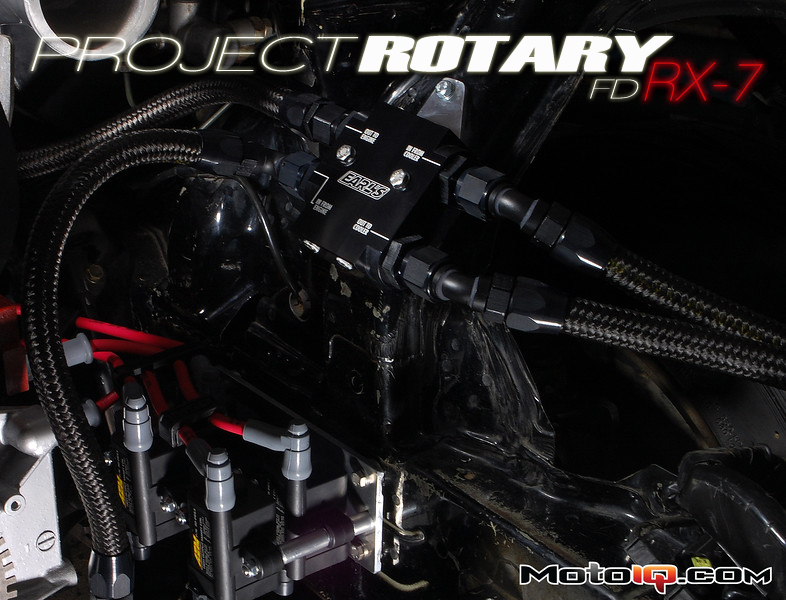,
Now that the thermostat and oil coolers are mounted it's time to introduce the other components that will occupy the same region of the engine bay. The factory ignition system uses three ignition coils in a blended direct-fire/wasted spark configuration and Mazda mounted them directly to the top of the engine under the intake manifold where they commonly get heat soaked. Since this configuration and mounting location are less than ideal, we are replacing the three factory coils with four new coils from AEM Electronics. This upgrade will allow us to configure the coils in a direct fire configuration and install them away from excessive heat.

AEM Electronics High Output “Smart” ignition coils have become a standard upgrade amongst RX-7 owners. They are inductive coils with a built in ignitor so they only need a signal from the ECU to fire, require much less real estate than capacitive discharge ignition systems, and are less expensive than an ignition amplifier for the stock coils. In other words, they tick all the boxes for an upgraded ignition system without breaking the bank.
A lot of what you know about traditional ignition systems and how they work can be thrown out the window when you start talking about rotaries. This is because of a few major differences when compared to piston engines. The primary difference is that while a piston engine fires all cyclinders every two engine rotations a rotary fires all six rotor faces every three revolutions. This is important because it changes the formula for determining coil duty cycle. What makes this even more complex is that fact that a piston engine requires only one spark plug per piston while a rotary requires one plug per rotor (or three rotor faces). When you work through the math you get to the result that a rotary engine requires the coils to fire once per rotation of the eccentric shaft while a piston engine fires once for every two revolutions.
The other difference is that rotaries use two spark plugs per combustion chamber. This is due to the fact that one spark plug cannot completely ignite the air/fuel mixture throughout the rotary's entire tall, slender combustion chamber. Because of this Mazda engineers placed two spark plugs in each rotor housing and programmed the ECU to stagger fire them. The first plug that fires is known as the leading plug and the second the trailing plug. The delay between leading and trailing firing events is not usually more than 10-15 degrees at full load and helps ignite any unburnt fuel without creating an overly advanced spark event that could cause detonation.

Close-up of the AEM ignition coils specifications and wiring pinout. This is an inductive coil and needs to recharge between each voltage discharge. The dwell time is how long the coil is charged for each ignition event and the dwell duty is the percent of time the coil is charging during each ignition cycle. With an 8000 RPM rev limit the rotary will require each coil to fire once every 7.5ms. At a coil duty cycle of 40% that means we have to configure the engine computer to run with an ignition dwell time of 3ms. It's almost as if these ignition coils were designed specifically for rotary engines setup for direct fire.
Once again these new components aren't going to mount themselves, so it's time to put the saw, drill, and welder to good use and make another bracket.

For mounting the AEM ignition coils to the body of the RX-7 we had to fabricate another mounting bracket and some spacers. There are a few off the shelf options for doing this, but custom was significantly less expensive and enabled the shortest possible ignition wire lengths.



